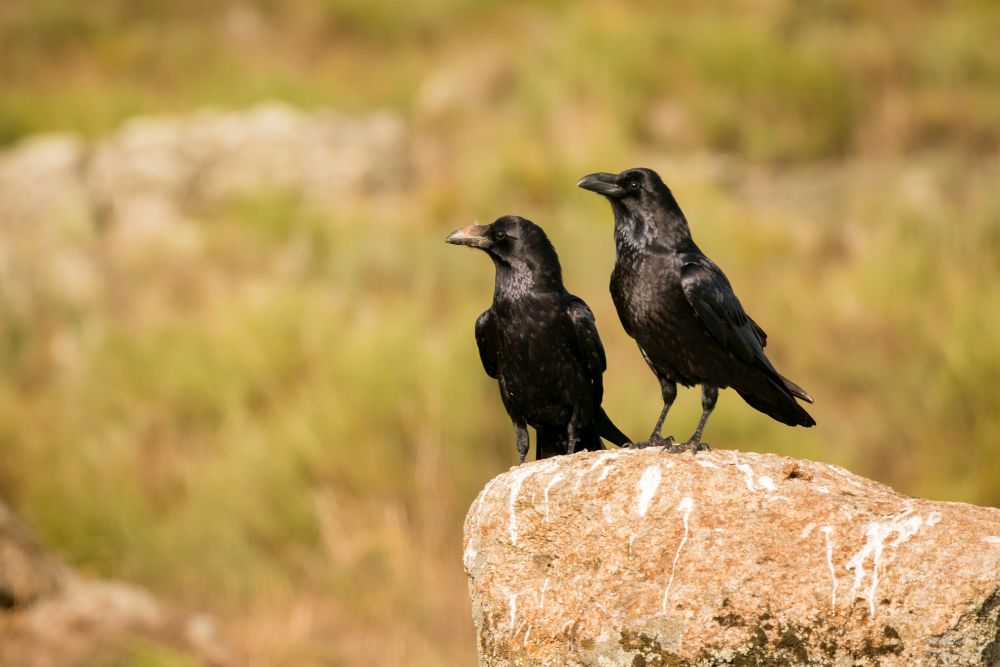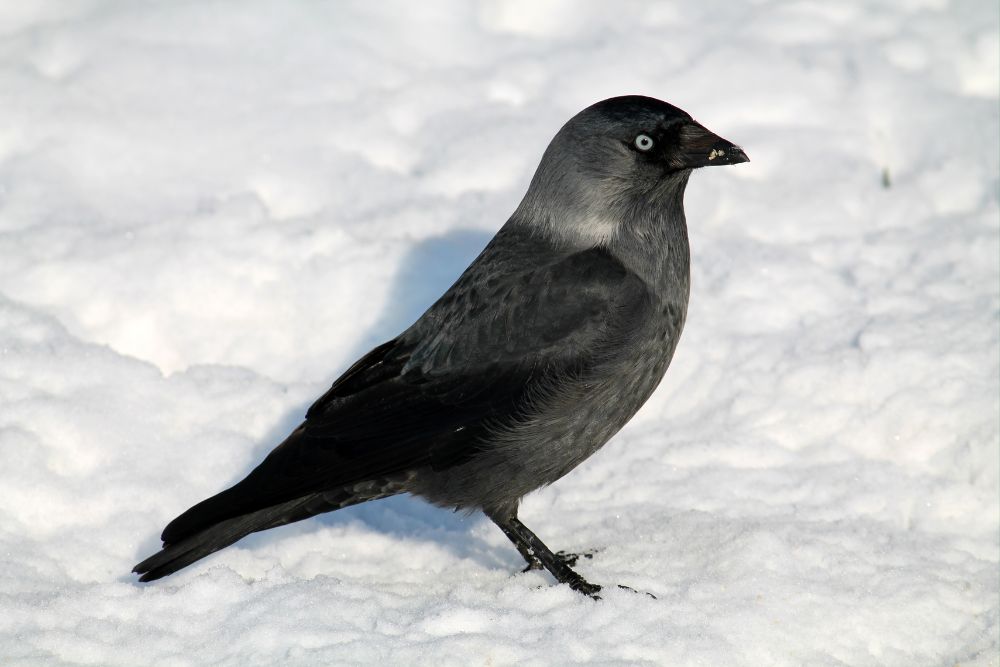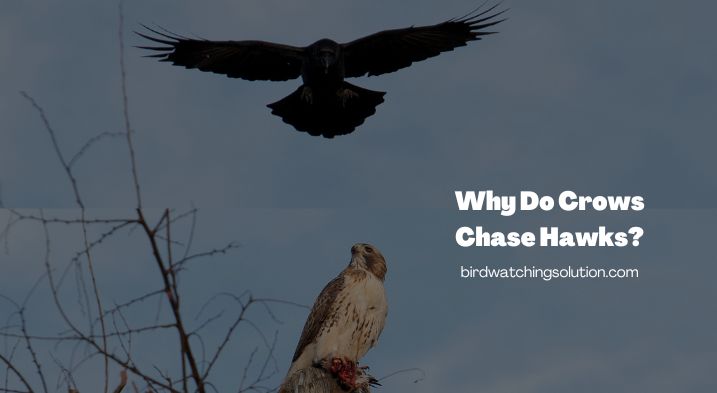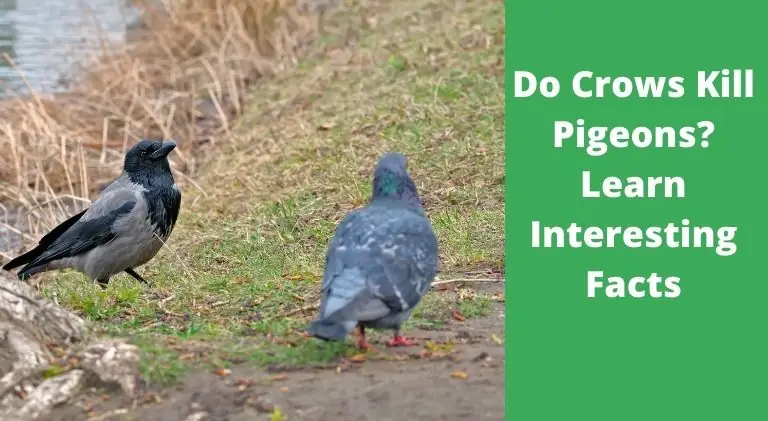How To Befriend a Crow? A Detailed Guide!
Have you ever encountered a crow in your backyard or on a park bench and felt a sense of intrigue towards these intelligent creatures?
Crows are often associated with mystery and mischief and have been a part of human folklore for centuries. But what if we told you that befriending a crow is not only possible but also a rewarding experience?
How to Befriend a Crow?
To befriend a crow, you should offer them food consistently and show them kindness. Crows are brilliant and social birds that can recognize human faces and voices. By feeding them regularly and being patient, you can gain their trust and eventually form a friendship.
With patience and understanding, you can establish a bond with these birds that goes beyond mere curiosity. In this article, we will share some tips and tricks on befriending a crow and uncover the fascinating world of these feathered friends.
So, get ready to dive into the world of crows and discover the joys of avian friendship.

Understanding Crows
Gathering all of the information about them is highly recommended to learn how to befriend them. This will help you know them better and expedite the trust-making process between you and the crow.
Crows are fascinating birds from the family Corvidae, including ravens, magpies, and jays. They are known for their intelligence and adaptability and have been studied extensively by scientists.
So let’s look at their social behaviors and incredible intelligence.
Crows are found all over the world and are known for their black plumage and distinctive cawing sound. They are medium-sized birds that typically range from 16 to 21 inches long and have a wingspan of up to 40 inches.
They are omnivorous and eat various foods, including insects, fruits, seeds, and small animals. They are also known to scavenge on carrion, making them essential ecosystem members.
Social Behaviors of Crows
Crows are highly social birds that live in groups called “murders.” These groups can range from just a few birds to over a hundred. Within these groups, crows form close bonds and engage in various social behaviors.
They communicate with each other using a wide range of calls, and studies have shown that they can even recognize individual humans and remember their faces. Crows also engage in playful behaviors, such as dropping sticks and retrieving them mid-air. They have been observed sharing food with other crows.
The Intelligence of Crows
Crows are brilliant birds and have been shown to possess problem-solving abilities that rival those of some primates. They can use tools like sticks or hooks to extract food from hard-to-reach places.
They can also recognize themselves in mirrors, a skill that is typically only seen in higher primates and dolphins. In addition, crows have been shown to have impressive memories, able to remember the faces of individual humans, and even hold grudges against those who have harmed them in the past.
Finding Crows in Your Area:
Crows are found in almost every part of the world except for the polar regions and some islands. They are adaptable birds and can thrive in various habitats, including forests, urban areas, and agricultural land.
If you want to observe crows in your area, you can start by searching for open fields, parks, and woodland areas where they are likely to forage for food. You can also listen for their characteristic calls and look for their distinct black feathers and stout beaks.
You can typically find them near a food source, such as a landfill or compost pile, where they scavenge for scraps. They are also known to frequent agricultural fields and orchards, where they can find insects and fruits to eat.
They are commonly found in parks and open spaces in urban areas, where they can scavenge for food and build their nests.
Finding crows in your area isn’t challenging because they are almost everywhere.
Creating a Safe Environment for Crows
Crows are known to be intelligent, social birds that can befriend humans if they feel safe and secure in their surroundings. As a bird lover, providing a safe environment for crows is essential.
Here are some tips to help you create a safe and welcoming environment for these feathered friends.

Providing Food and Water for Crows:
One of the best ways to attract crows to your yard is by providing them with food and water. You can offer them a variety of foods, such as peanuts, sunflower seeds, or even leftover meat scraps.
Make sure to place the food in a safe and elevated location so it’s not easily accessible to predators. Crows are also attracted to water sources, so ensure they have clean water to drink.
For your information, I have provided different food items that can help you understand what to feed your feathered friends when they visit you.
| Food Item | Protein Content | Fat Content | Potential Hazards/Benefits |
| Peanuts | High | High | Can be a choking hazard if not shelled; good source of protein and fat |
| Fruits (e.g., berries, apples) | Low to moderate | Low to moderate | Low risk of harm, but not a significant source of protein or fat |
| Insects (e.g., mealworms) | High | Low to moderate | Good source of protein; |
| Bread | Low | Low | Can be a choking hazard if not torn into small pieces; not a significant source of nutrients |
| Cheese | High | High | High in fat and protein, but should be offered in moderation due to potential health risks |
Building a Birdhouse for Crows:
Crows are intelligent birds that often build nests in trees. Still, they also appreciate the safety and shelter of a birdhouse.
Building a birdhouse for crows can be a fun and rewarding project, and it can provide a safe place for them to roost and raise their young.
Use natural materials like wood and straw, and place the birdhouse in a safe and elevated location.
Avoiding Potential Hazards for Crows:
It’s essential to be aware of potential hazards that can harm crows, such as pesticides, chemicals, and other toxic substances. Avoid using these products in your yard and use natural pest control methods instead.
Additionally, it’s essential to keep your pets, such as cats and dogs, indoors or supervised when crows are present to avoid any potential harm to the birds. Providing a safe and hazard-free environment can help ensure that crows thrive in your area.

Building Trust with Crows:
When learning how to befriend a crow, you must first learn how to gain their trust. Crows are one of those birds that get scared very easily. Therefore, you must make them understand you are not harming them.
Here is how you can gain their trust when making friends with the crows in your backyard:
Understanding Crow Body Language:
One way to gain the trust of crows is by understanding their body language. Crows have unique body language that can help you know their mood and intentions.
For example, when crows relax, they may puff up their feathers and hop around. On the other hand, if they feel threatened, they may crouch down and fluff their feathers to appear more prominent.
Offering Gifts to Crows:
Another way to gain the trust of crows is by offering them gifts. Crows are known for their fondness for shiny objects, and they may appreciate small trinkets like coins, beads, or other small items.
You can establish a positive relationship with the crows by offering gifts regularly and gaining their trust.
Spending Time Near Crows Without Disturbing Them:
It is essential to spend time near crows without disturbing them. If you want to befriend crows, approach them slowly and quietly. You can visit their nesting sites or favorite feeding areas and watch them afar.
Over time, they will become more comfortable with your presence, and you may even be able to feed them from your hand. Remember to be patient and respectful, and don’t try to force a relationship with them.
Communicating with Crows
Communicating with crows is an essential part of befriending them. Crows have a complex language that includes warning, territorial, and mating calls. Listening to their calls can help to understand their behavior.
One way to communicate with crows is by responding to their calls. For example, if you hear a crow’s alarm call, you can mimic it to inform them that you know their warning. You can also use your voice to make sounds that imitate crows’ sounds, such as clicks, clucks, and whistles.
Using tools to communicate with crows can also be effective. For example, you can use a whistle or a clicker to make a distinct sound that the crows can recognize. Over time, the crows may associate the sound with you and even come to you when they hear it.
It is important to remember that communicating with crows takes time and patience. It can take weeks or months before the crows start trusting and sharing with you. However, you can develop a strong bond with these intelligent and fascinating birds with persistence and dedication.
Strengthening Your Bond with Crows
Strengthening your bond with crows is an essential part of befriending them. Crows are brilliant birds and enjoy learning new things. Teaching them new behaviors can be a great way to strengthen your relationship.
You can start with simple tricks like teaching them to fly to a specific spot when you call their name. Playing games with crows, such as hiding treats and watching them search for them, can also be a fun bonding experience.
Building a lasting relationship with crows requires patience and consistency. Visiting them regularly and maintaining a positive presence in their environment is essential. Remember that crows are highly social birds, so it’s best to befriend a group rather than an individual.
Over time, you may find that crows will start to recognize you and even bring you gifts as a sign of their affection. You can build a solid and lasting bond with these fascinating birds with patience and dedication.
Learn Crow Etiquette to Make the Process Easier
Crow etiquette is another crucial aspect when befriending these intelligent and social birds. One of the most critical aspects of crow etiquette is respecting their boundaries. While crows can be friendly and playful, they also have personal space, and invading it can lead to aggression.
Observing and learning from their body language is essential to avoid making them uncomfortable. Avoiding crow aggression also involves being mindful of the food you provide.
While crows love to eat, it’s essential not to feed them food harmful to their health, such as bread, crackers, and other processed foods. It’s also vital to refrain from providing them or creating a dependency on human-provided food.

Some Common Misconceptions About Crows
Crows have a long history of being misunderstood and are often portrayed as dark, ominous creatures associated with death and misfortune. However, many of these perceptions are not based on fact and are simply misconceptions about these intelligent and fascinating birds.
One common misconception about crows is that they are harbingers of death or bad luck. This belief likely stems from their association with Halloween and horror movies. However, crows are actually birds; their presence indicates nothing about the future.
Another common fear about crows is that they are aggressive and will attack humans. While crows protect their nests and may dive-bomb intruders to scare them away, they generally do not pose a significant threat to humans. Crows are more likely to avoid people than to confront them.
Finally, there are many myths about crows being pests or nuisances. While it is true that crows can cause damage to crops or property, they also provide valuable benefits to the ecosystem by controlling insect populations and acting as scavengers to clean up dead animals.
Overall, it is important to separate fact from fiction regarding crows and appreciate these intelligent and complex birds for their role in our world.
Last Minute Thoughts!
In this article, we discussed some steps on how to befriend a crow.
To befriend a crow, it’s important to understand their social behaviors, intelligence, and body language. Building trust by offering gifts and spending time near them without disturbing them is key.
Communicating with crows by learning their language, responding to their calls, and using tools can help strengthen the bond. It’s important to respect Crow boundaries, avoid aggression, and protect them from potential hazards.
Debunking common misconceptions about crows can help people overcome their fear and develop a lasting relationship with these intelligent birds.
I hope you have enjoyed reading this article and found it helpful. Please don’t forget to share it with your friends and family too!
Happy Birding!



